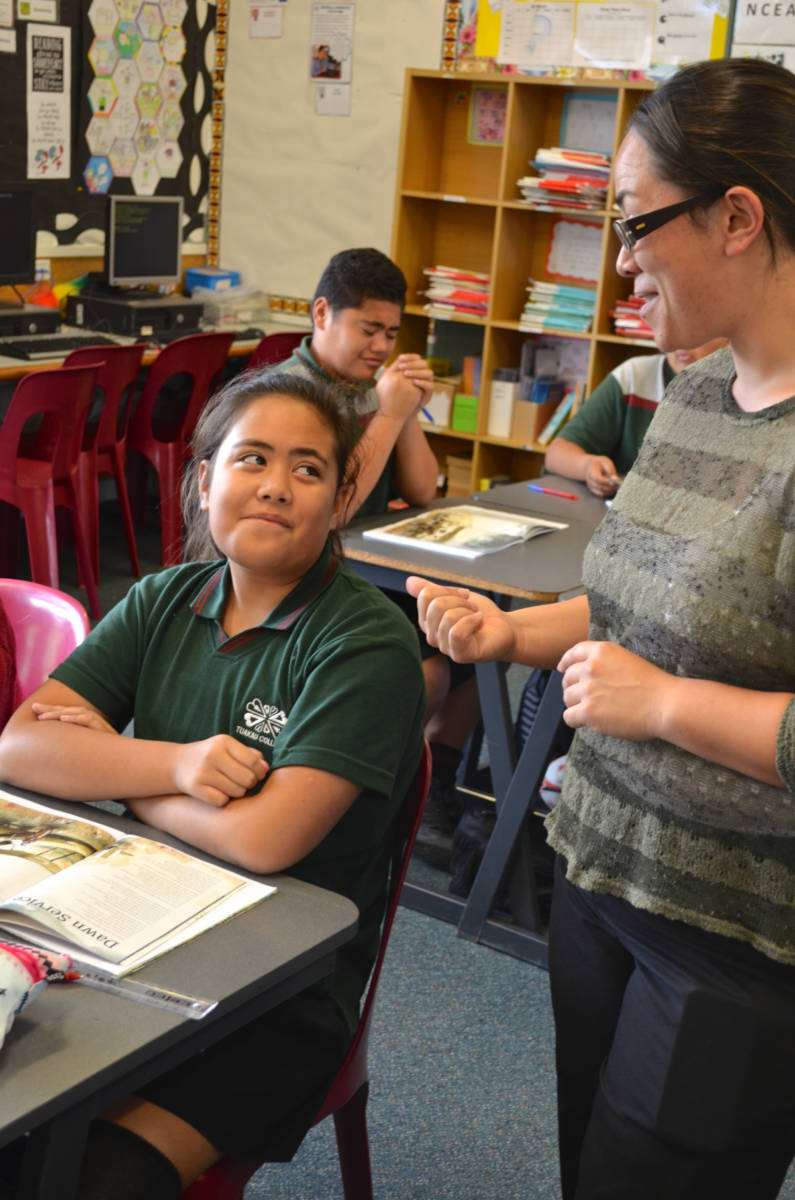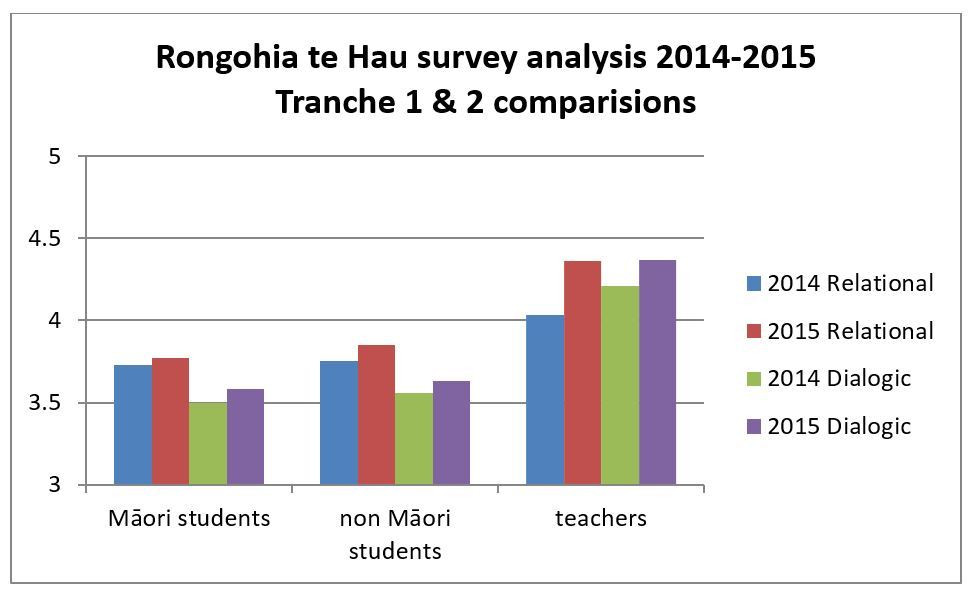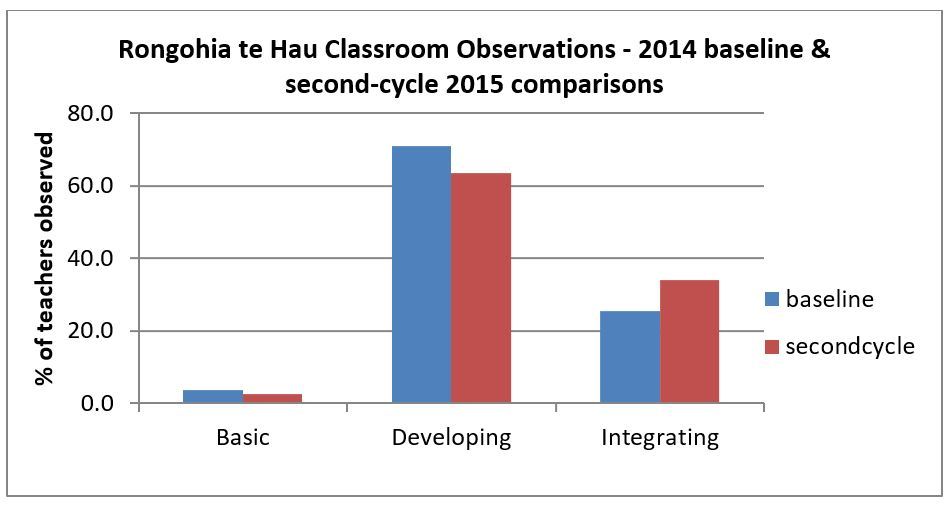Evidence Gathered
The following data shows the collated results in 2014 baseline observations in Tranche 1 and 2 schools and second-cycle observations in those schools in terms 3 and 4, 2015.
Number of schools and teachers participating in 2014 & 2015 Rongohia Te Hau Classroom Observations
|
|
Baseline – 2014 data
|
Second Cycle- 2015 data
|
|
Number of schools
|
54
|
43
|
|
Number of observations completed
|
1566
|
1174
|
|
% of teachers observed
|
44%
|
45%
|
Collated data from the Tranche 1 and Tranche 2 Kia Eke Panuku schools (54 schools in 2014 and 43 schools in 2015) that have completed the Rongohia te Hau classroom observations by November 30th, are presented below. The continuum used by schools is a 5-point scale. The results are reported below across the 5-point scale, and for discussion purposes, the scale has been collapsed to the following categories:
Basic: Rated as a 1 on this scale:Teachers who have either yet to, or are just beginning to implement the basic aspects of culturally responsive and relational pedagogy.
Developing: Rated as a 2 or a 3 on this scale: Teachers who are developing implementation of culturally responsive and relational pedagogy.
Integrating: Rated as a 4 or a 5 on this scale. Teachers who are integrating/have integrated culturally responsive and relational pedagogy into and throughout their day-to-day practice.
Number and % of teacher ratings on the Rongohia Te Hau Classroom Observations, 1 to 5 pedagogy continuum
|
|
1
|
2
|
3
|
4
|
5
|
|
Baseline: Number of teachers
|
56
|
410
|
701
|
333
|
66
|
|
Baseline: % of teachers
|
3.6
|
26.2
|
44.8
|
21.3
|
4.2
|
|
Second cycle: Number of teachers
|
28
|
206
|
541
|
313
|
86
|
|
Second cycle: % of teachers
|
2.4
|
17.5
|
46.1
|
26.7
|
7.3
|
|
|
Basic
|
Developing
|
Integrating
|
These data show that at baseline (terms 2 and 3, 2014), 25.5% of teachers observed in the schools where Rongohia te Hau classroom observations had been conducted, were integrating culturally responsive and relational pedagogy into their day-to-day practice. By terms 3 and 4, 2015 this had increased to 34%. The percentage of teachers assessed at Developing and Basic have decreased over this one-year period as shown in the graph below.




